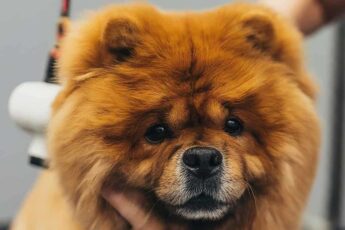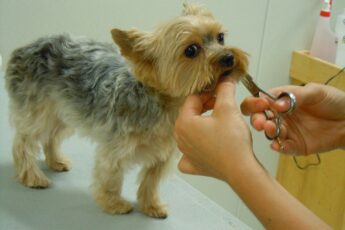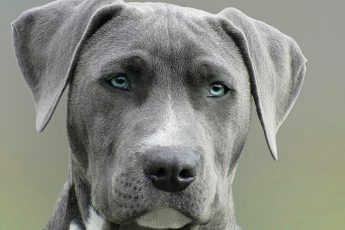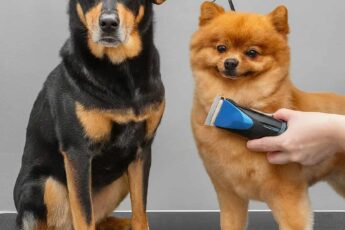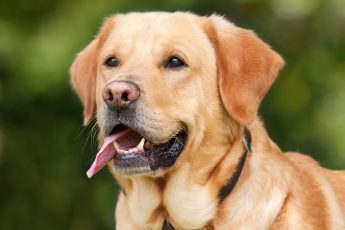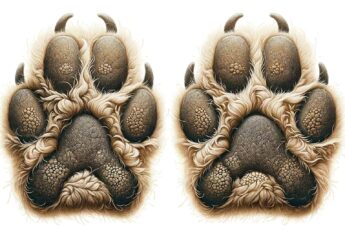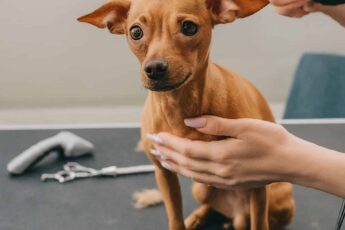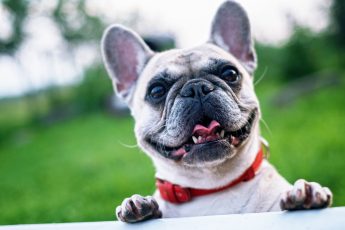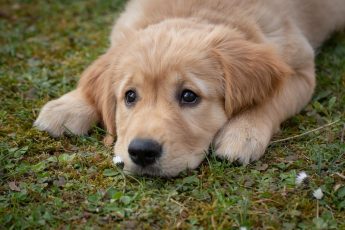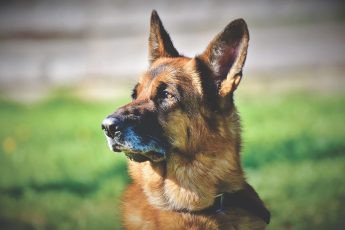Essential Dog Grooming Tools
I’ve found that having the right tools makes dog grooming much easier. The four essential tools for dog grooming are:
- Brushes
- Combs
- Clippers
- Scissors
Brushes are crucial for maintaining a dog’s coat. They remove loose fur, distribute natural oils, and keep the coat looking shiny. Combs help detangle fur and remove small debris.
Clippers come in handy for more precise grooming. They’re great for trimming fur, especially on dogs with thick coats. Scissors round out the basic toolkit. They’re perfect for touching up areas around the face, paws, and ears.
Each tool serves a specific purpose. Here’s a quick breakdown:
| Tool | Primary Use |
|---|---|
| Brushes | Daily maintenance, oil distribution |
| Combs | Detangling, removing small debris |
| Clippers | Trimming larger areas of fur |
| Scissors | Precision work on delicate areas |
I always recommend starting with these four basics. They’ll cover most grooming needs for the average dog owner.
Best Dog Grooming Tools
| Image | Price | Buy | Title |
|---|---|---|---|
 Top Top | Buy Now | oneisall Dog Shaver Clippers Low Noise Rechargeable Cordless Electric Quiet Hair Clippers Set for Dogs Cats Pets | |
 | Buy Now | Chom Chom Roller Pet Hair Remover and Reusable Lint Roller - ChomChom Cat and Dog Hair Remover for Furniture, Couch, Carpet, Clothing and Bedding - Portable, Multi-Surface Fur Removal Tool | |
 | Buy Now | GLADOG Professional 5 in 1 Dog Grooming Scissors Set with Safety Round Tips, Sharp and Heavy-duty Pet Grooming Shears for Cats | |
 | Buy Now | AIRROBO Dog Grooming Vacuum, Dog Grooming Kit,12000Pa Strong Pet Grooming Vacuum for Dogs, 2L Large Capacity Dog Vacuum for Shedding Grooming Hair, Dog Hair Vacuum, 5 Pet Grooming Tools, Quiet,PG100 | |
 | Buy Now | Dog Nail Grinder, Dog Nail Trimmers and Clippers Kit, Super Quiet Electric Pet Nail Grinder, Rechargeable, for Small Large Dogs & Cats Toenail & Claw Grooming,3 Speeds, 2 Grinding Wheels (A-Dark Blue) | |
 | Buy Now | Maxpower Planet Pet Grooming Brush - Double Sided Shedding, Dematting Undercoat Rake for Dogs, Cats - Extra Wide Dog Grooming Brush, Dog Brush for Shedding, Cat Brush, Reduce Shedding by 95%, Blue | |
 | Buy Now | Best Pet Supplies 8" x 9" Pet Grooming Wipes for Dogs & Cats, 100 Pack, Plant-Based Deodorizer for Coats & Dry, Itchy, or Sensitive Skin, Clean Ears, Paws, & Butt - Calming Lavender | |
 | Buy Now | Burt's Bees for Pets Natural Itch Soothing Spray with Honeysuckle | Best Anti-Itch Spray for Dogs With Itchy Skin | Cruelty Free, Sulfate & Paraben Free - Made in the USA, 10 Oz | |
 | Buy Now | Pet Grooming Gloves - Gentle Dog Bathing Shampoo Brush - Massage Mitt with Enhanced Five Finger Design - Efficient Deshedding Glove for Dogs, Cats, Rabbits and Horses - 1 Pack |
Brushes for Different Coat Types
Dogs come in all shapes and sizes, and so do their coats. That’s why we need different types of brushes. Let’s explore the main types:
- Slicker brushes
- Bristle brushes
- Pin brushes
- Undercoat rakes
Slicker brushes have fine, short wires close together on a flat surface. They’re excellent for removing mats in medium to long coats. I often use them on dogs with curly or woolly fur.
Bristle brushes work well on short-haired, smooth-coated dogs. They help remove dirt and loose hair while spreading natural oils through the coat. Pinbrushes are a good choice for dogs with medium to long hair. They have widely spaced metal pins with rounded tips, which help detangle without scratching the skin.
Undercoat rakes are designed for dogs with thick undercoats. These brushes have long, widely-spaced teeth that reach deep into the coat to remove loose undercoat fur. They’re particularly useful during shedding season.
A professional groomer once told me:
“The right brush can make all the difference. It’s like having the perfect paintbrush for a masterpiece – it makes your job easier and the results more beautiful.”
Choosing the right brush depends on your dog’s coat type. Some dogs might even benefit from using multiple brush types. For example, a long-haired dog might need both a slicker brush for mats and a pin brush for general grooming. Experiment to find what works best for your furry friend.
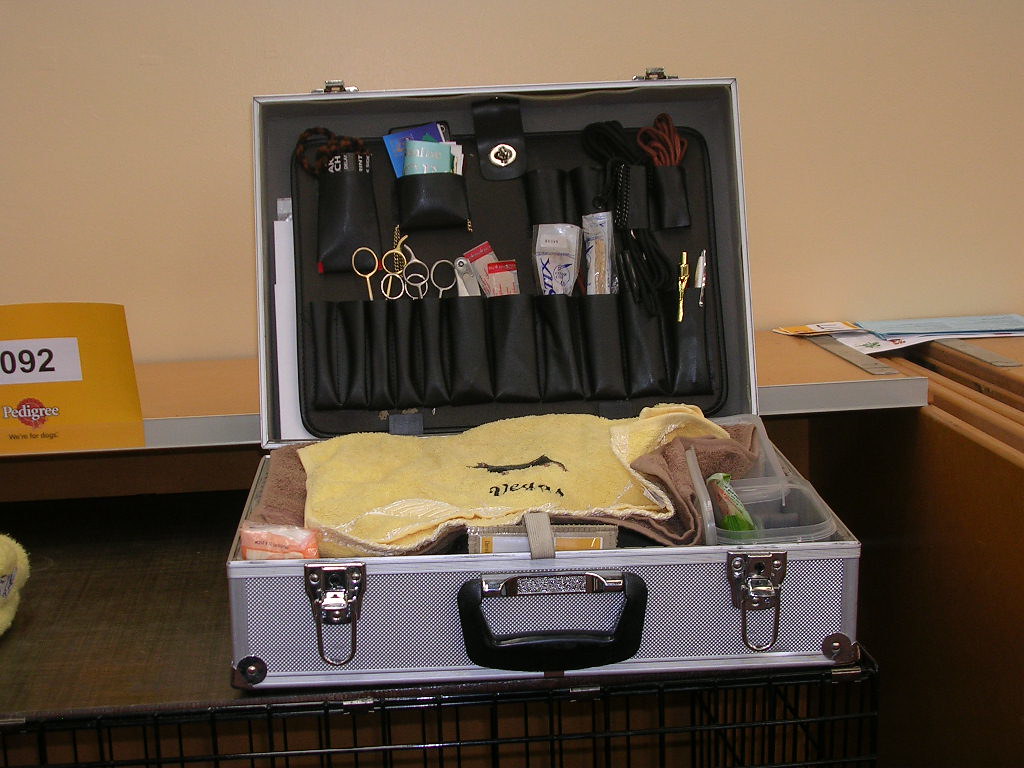
Specialized Combs
When it comes to dog grooming, specialized combs play a crucial role. I’ve found that different combs serve unique purposes, making them essential tools in any groomer’s kit.
Flea combs have tightly spaced teeth that can catch and remove fleas, eggs, and debris from a dog’s coat. They’re particularly useful for detecting early flea infestations. Dematting combs feature sharp, widely spaced teeth that cut through mats and tangles. These combs require careful handling to avoid injuring the dog’s skin.
Shedding combs help remove loose undercoat fur during heavy shedding seasons. They typically have longer teeth to reach deeper into the coat. Fine-tooth combs work well for finishing touches, especially around delicate areas like the face and ears.
Here’s a quick overview of specialized combs:
- Flea combs: Detect and remove fleas
- Dematting combs: Break up mats and tangles
- Shedding combs: Remove loose undercoat
- Fine-tooth combs: Finish grooming in delicate areas
Each comb type addresses specific grooming needs. By using the right comb for the task, you can make grooming more effective and comfortable for the dog.
Professional-Grade Clippers
Professional-grade clippers are a game-changer for dog grooming. There are two main types: cordless and corded. Cordless clippers offer freedom of movement, which is ideal for working with fidgety dogs. Corded clippers provide consistent power but may limit mobility.
Blade types vary based on the desired cut length and coat type. Some common blade types include:
- Skip tooth blades: For rough cutting
- Finishing blades: For smooth, close cuts
- Wide blades: For large dogs or body clipping
Maintaining clippers is crucial for their longevity and performance. I always clean the blades after each use and oil them regularly. This prevents rusting and ensures smooth operation.
Safety features are another important aspect of professional clippers. Look for:
| Feature | Benefit |
|---|---|
| Overheating protection | Prevents burns |
| Low vibration | Reduces noise and hand fatigue |
| Ergonomic design | Improves handling and control |
When choosing clippers, consider the dog’s coat type, your grooming frequency, and your skill level. High-quality clippers might seem expensive, but due to their durability and performance, they often prove more cost-effective in the long run.
Remember, proper technique is as important as having the right tool. Start with a lower blade speed and work your way up as you become more comfortable. Always move the clippers in the direction of hair growth to achieve the best results.
Grooming Scissors
Grooming scissors are essential for precision work on a dog’s coat. I find them particularly useful for areas that require detailed attention. There are three main types of grooming scissors: straight scissors, curved scissors, and thinning shears.
Straight scissors are versatile tools for general trimming. They work well on most areas of a dog’s body and can create clean, straight lines. Curved scissors, on the other hand, excel at shaping rounded areas like the face, paws, and hindquarters. Their curved blade allows for smoother, more natural-looking cuts around contoured body parts.
Thinning shears have teeth on one or both blades. They help blend different lengths of fur, creating a more natural look. These shears are great for reducing bulk in thick coats without leaving obvious cut lines.
When using grooming scissors, safety should always be the top priority. Here are some important safety tips:
- Keep the scissors parallel to the skin, never perpendicular.
- Use the tips of the scissors for precise cuts, not the full blade.
- Take frequent breaks to avoid hand fatigue, which can lead to accidents.
- Always use scissors with rounded tips to prevent accidental pokes.
Remember, quality matters when it comes to grooming scissors. Sharp, well-made scissors will make your job easier and provide better results.
Nail Care Tools
Proper nail care is crucial for a dog’s comfort and health. The right tools can make this sometimes challenging task much easier. The three main tools for nail care are nail clippers, grinders, and styptic powder.
Nail clippers come in two styles:
- Guillotine clippers: Best for small to medium dogs
- Scissor clippers: Suitable for larger dogs or thicker nails
Grinders offer an alternative to traditional clippers. They file down the nail gradually, which can be less stressful for some dogs. Grinders also allow for smoother nail edges, reducing the risk of snagging.
Here’s a comparison of clippers and grinders:
| Tool | Pros | Cons |
|---|---|---|
| Clippers | Quick, quiet, precise | Can crush nails if not sharp |
| Grinders | Smooth finish, less risk of over-cutting | Noisy, takes longer |
Styptic powder is a must-have safety item. If you accidentally cut the quick (the blood vessel in the nail), styptic powder quickly stops the bleeding. It’s a lifesaver in nail-trimming emergencies.
When trimming nails, always err on the side of caution. It’s better to trim a little at a time than to cut too much. If you’re unsure, ask a professional groomer or veterinarian to demonstrate proper technique.
With practice and the right tools, nail care can become a stress-free part of your dog’s grooming routine.
Bathing Equipment
Bathing forms a crucial part of dog grooming. The right equipment can make this task easier and more effective. I always recommend having a good set of bathing tools on hand.
Shampoos come in various formulations for different coat types and skin conditions. Here’s a quick guide:
- Regular shampoo: For general cleaning
- Medicated shampoo: For skin issues
- Whitening shampoo: For light-colored coats
- Deodorizing shampoo: For smelly dogs
Conditioners help keep the coat soft and manageable. They’re especially useful for long-haired breeds or dogs with dry skin.
Sprayers attach to your faucet or shower head, allowing you to wet and rinse your dog thoroughly. They help control water pressure and direction, making bathing more efficient.
Towels are essential for drying. Microfiber towels work well as they’re highly absorbent and gentle on the coat. I recommend having several on hand for each bathing session.
Here’s a list of basic bathing equipment:
- Shampoo
- Conditioner
- Sprayer
- Towels
- Non-slip mat (for tub safety)
Remember, the temperature of the water matters. Lukewarm water works best for most dogs. Too hot or too cold can make the experience unpleasant for your furry friend.
Drying Tools
After bathing, proper drying is crucial to prevent skin issues and maintain coat health. Several tools can help speed up the drying process and achieve better results.
High-velocity dryers blow air at high speeds to force water out of the coat. They’re incredibly efficient, especially for thick or double-coated breeds. However, the noise might frighten some dogs, so introduce this tool gradually.
Stand dryers allow hands-free operation. They’re great for long grooming sessions or when you need both hands free to brush while drying. These dryers typically offer adjustable height and airflow settings.
Handheld dryers resemble human hair dryers but are designed for pet use. They’re versatile and easy to maneuver around different body parts. Look for models with multiple heat and speed settings for optimal control.
Drying coats absorb moisture while allowing air to circulate. They’re helpful for dogs that don’t tolerate blow dryers well. Simply put the coat on after towel drying and let it do its work.
Here’s a comparison of different drying methods:
| Method | Speed | Noise Level | Best For |
|---|---|---|---|
| High-velocity dryer | Fast | High | Thick coats |
| Stand dryer | Medium | Medium | Long sessions |
| Handheld dryer | Slow-Medium | Low-Medium | Sensitive areas |
| Drying coat | Slow | Silent | Nervous dogs |
When using any drying tool, always keep the air moving to prevent overheating one area. Start with a lower heat setting and increase if necessary. The goal is to dry the dog thoroughly without causing discomfort or skin irritation.
Bath Tubs for Dogs
Choosing the right bathtub can make dog grooming much more manageable. Different types suit various needs and spaces. Let’s explore the options.
Portable tubs offer flexibility. You can use them indoors or outdoors and store them away when not in use. They often come with features like built-in leash attachments and drainage systems. These tubs work well for small to medium-sized dogs.
Stationary tubs provide stability and durability. They’re ideal for frequent groomers or those with larger dogs. Many models include adjustable legs, making it easier to find a comfortable working height.
Elevated tubs reduce back strain for groomers. They typically feature ramps or steps for easy dog access. Some elevated tubs also offer 360-degree access, which helps when washing hard-to-reach areas.
Non-slip mats are crucial for any tub type. They provide traction, preventing dogs from slipping and feeling anxious during bath time. Look for mats that securely attach to the tub bottom.
Here’s a quick comparison of tub types:
| Tub Type | Pros | Cons |
|---|---|---|
| Portable | Easy storage, versatile | Less sturdy |
| Stationary | Durable, stable | Takes up space |
| Elevated | Ergonomic, easy access | More expensive |
When selecting a tub, consider your available space, the size of your dog, and how often you’ll use it. A good tub can make bathing more enjoyable for both you and your furry friend.
Ear Care Instruments
Proper ear care is essential for a dog’s health and comfort. The right tools make this task simpler and more effective. Let’s look at the key instruments for ear care.
Ear cleaners come in liquid form. They help dissolve wax and debris, making it easier to clean the ears. Look for gentle, vet-approved formulas. Some cleaners also have drying properties, which help prevent moisture buildup.
Cotton balls work well when applied with a cleaner and wiping away dirt. They’re soft and unlikely to irritate. Avoid using cotton swabs, as they can push debris further into the ear canal or cause injury.
Ear powder absorbs moisture and helps with hair removal. It’s particularly useful for breeds with hairy ear canals. Apply a small amount before plucking ear hair to make the process easier and more comfortable for the dog.
Here’s a basic ear-cleaning routine:
- Apply ear cleaner
- Massage the base of the ear
- Let the dog shake its head
- Wipe away debris with cotton balls
- Use ear powder if needed for hair removal
Remember, healthy ears shouldn’t smell bad or have excessive wax. If you notice an unusual odor or redness or your dog seems uncomfortable, consult a veterinarian. Some dogs need more frequent ear cleaning than others, depending on their breed and individual needs.
Always be gentle when cleaning ears. Stop if your dog shows signs of pain or discomfort. With the right tools and technique, ear care can become a smooth part of your grooming routine.
Dental Hygiene Tools
Maintaining a dog’s dental health is crucial. The right tools can make this task easier and more effective. I’ve found that a combination of different dental hygiene tools works best.
Toothbrushes designed for dogs come in various sizes. Some fit over your finger, while others have long handles for better reach. Choose a size appropriate for your dog’s mouth. Soft bristles are gentler on gums and more comfortable for the dog.
Dog toothpaste comes in flavors appealing to canines, like chicken or beef. Never use human toothpaste for dogs, as it can be harmful if swallowed. Enzymatic toothpastes are particularly effective at breaking down plaque.
Dental wipes offer a convenient alternative to brushing. They’re great for dogs who won’t tolerate a toothbrush. Simply wrap the wipe around your finger and rub it along the dog’s teeth and gums.
Water additives can help maintain dental health between brushings. Add them to your dog’s drinking water to help reduce plaque and freshen breath.
Here’s a comparison of dental hygiene tools:
| Tool | Ease of Use | Effectiveness |
|---|---|---|
| Toothbrush | Moderate | High |
| Toothpaste | Easy | High |
| Dental wipes | Very easy | Moderate |
| Water additives | Effortless | Low to moderate |
Remember, consistency is key in dental care. Aim to clean your dog’s teeth at least a few times a week. If your dog resists, start slowly and use positive reinforcement. With patience, most dogs can learn to tolerate or even enjoy tooth brushing.
De-shedding Tools
Managing a dog’s shedding can be a challenge, but the right de-shedding tools make a big difference. I’ve found that regular use of these tools can significantly reduce loose fur around the house.
Shedding blades have a serrated edge that removes loose undercoat fur. They work well on short to medium-coated breeds. Use them with gentle, short strokes in the direction of hair growth.
Deshedding combs, like the popular Furminator, have closely spaced metal teeth that reach deep into the coat. They’re highly effective at removing loose undercoats without damaging the topcoat. These tools work best on dogs with thick double coats.
Grooming gloves offer a more tactile approach to de-shedding. They have rubber nubs that collect loose fur as you pet your dog. Many dogs enjoy this method as it feels like being petted.
Here’s a quick guide to choosing a de-shedding tool:
- For short coats: Shedding blade or grooming glove
- For medium coats: Deshedding comb or grooming glove
- For long or thick coats: Deshedding comb
When using any de-shedding tool, be gentle and watch for signs of skin irritation. Start with short sessions and gradually increase the time as your dog gets used to it. Regular de-shedding, especially during high shedding seasons, can keep your dog’s coat healthy and your home cleaner.
Remember, some breeds shed more than others. If you’re concerned about excessive shedding, consult with a veterinarian to rule out any underlying health issues.
Mat Removal Equipment
Dealing with matted fur can be challenging, but the right tools make the job much easier. I’ve found that a combination of different mat removal tools works best for various situations.
Mat splitters have a sharp, curved blade that cuts through mats safely. They allow you to slice larger mats into smaller sections, making them easier to brush out. Always use mat splitters with caution to avoid accidentally cutting the dog’s skin.
Mat rakes have widely spaced metal teeth that help break up mats and tangles. They work well for loosening mats before using finer tools. Some mat rakes have blades between the teeth to cut through stubborn tangles.
Detangling sprays can be a great help when dealing with mats. They lubricate the hair, making it easier to work through tangles. Look for sprays with natural ingredients that won’t irritate your dog’s skin.
Here’s a simple process for dealing with mats:
- Apply detangling spray to the matted area
- Use a mat splitter to break up large mats
- Work through the smaller sections with a mat rake
- Finish with a regular brush or comb
Remember, prevention is better than cure. Regular brushing can help prevent mats from forming in the first place. If you encounter a severe mat that you can’t safely remove, don’t hesitate to seek help from a professional groomer.
Grooming Tables and Restraints
A good grooming setup can make the process safer and more comfortable for both you and your dog. Grooming tables and proper restraints are key components of this setup.
Adjustable tables allow you to set the perfect working height, reducing strain on your back and making it easier to reach all parts of the dog. Look for tables with non-slip surfaces to keep your dog secure.
Grooming arms attach to the table and provide a place to secure the dog. They usually have an adjustable height and can swivel to different positions. This flexibility helps you keep the dog in place while you work on different areas.
Nooses or loops attach to the grooming arm and go around the dog’s neck or body. They keep the dog in position without being too restrictive. Always use nooses with caution, and never leave a dog unattended while restrained.
Here’s a comparison of different table types:
| Table Type | Pros | Cons |
|---|---|---|
| Foldable | Easy storage, portable | Less stable |
| Hydraulic | Adjustable height, sturdy | Expensive, not portable |
| Electric | Easy height adjustment | Requires power source |
Safety should always be your top priority when using grooming tables and restraints. Here are some key safety tips:
- Never leave a dog unattended on the table
- Use restraints loosely enough for comfort but tight enough for security
- Keep sharp tools away from the edge of the table
- Always have treats on hand to reward good behavior
With the right setup, grooming can become a more pleasant experience for both you and your dog. Remember, patience and positive reinforcement go a long way in making grooming time successful.
Storage and Organization
Organizing your grooming tools makes the whole process smoother and more efficient. Proper storage also extends the life of your tools. Let’s explore some effective storage and organization options.
Tool cases provide a portable solution for your grooming equipment. They come in various sizes and configurations. Look for cases with separate compartments for different tools. This separation prevents damage and makes it easy to find what you need quickly. Some cases even have removable trays for added flexibility.
Grooming caddies offer easy access to frequently used items. They typically have multiple pockets and compartments. You can keep them near your grooming area for quick reach. Many caddies are designed to hang on grooming tables or arms, keeping tools within arm’s reach.
Wall-mounted organizers maximize space efficiency. They work well for permanent grooming setups. You can customize these organizers with hooks, shelves, and magnetic strips. This setup allows you to see all your tools at a glance and keeps your workspace clutter-free.
Here’s a quick guide to organizing your grooming tools:
- Group similar tools together (e.g., all brushes in one section)
- Store sharp tools in protective covers
- Keep frequently used items easily accessible
- Clean and dry tools before storing them
- Label compartments for quick identification
Consider these factors when choosing a storage solution:
| Important to maintain hygiene | Importance |
|---|---|
| Portability | High for mobile groomers |
| Durability | Essential for long-term use |
| Size | Important to maintain hygiene |
| Ease of cleaning | Important for maintaining hygiene |
Remember, a well-organized grooming kit saves time and frustration. It also helps you keep track of your tools, ensuring you have everything you need for each grooming session. With the right storage system, you’ll find grooming becomes a more enjoyable and efficient task.
Expert Sites on Dog Grooming Tools:
Here are some links to expert sites on dog grooming tools:
- American Kennel Club (AKC): While not solely focused on tools, the AKC offers a great article with tips from show dog experts on grooming tools: https://www.akc.org/expert-advice/health/grooming/
- Wahl Clipper Corporation: Wahl is a major brand in pet grooming tools. Their website offers an overview of pet grooming, including information on selecting the right tools: https://wahlusa.com/pet-grooming-tools
- Expert Reviews—This site reviews the best dog clippers for various needs, including value, nervous dogs, and overall quality.
